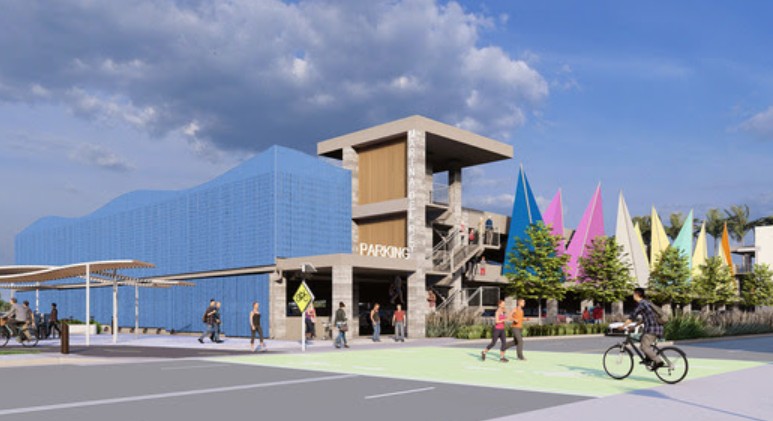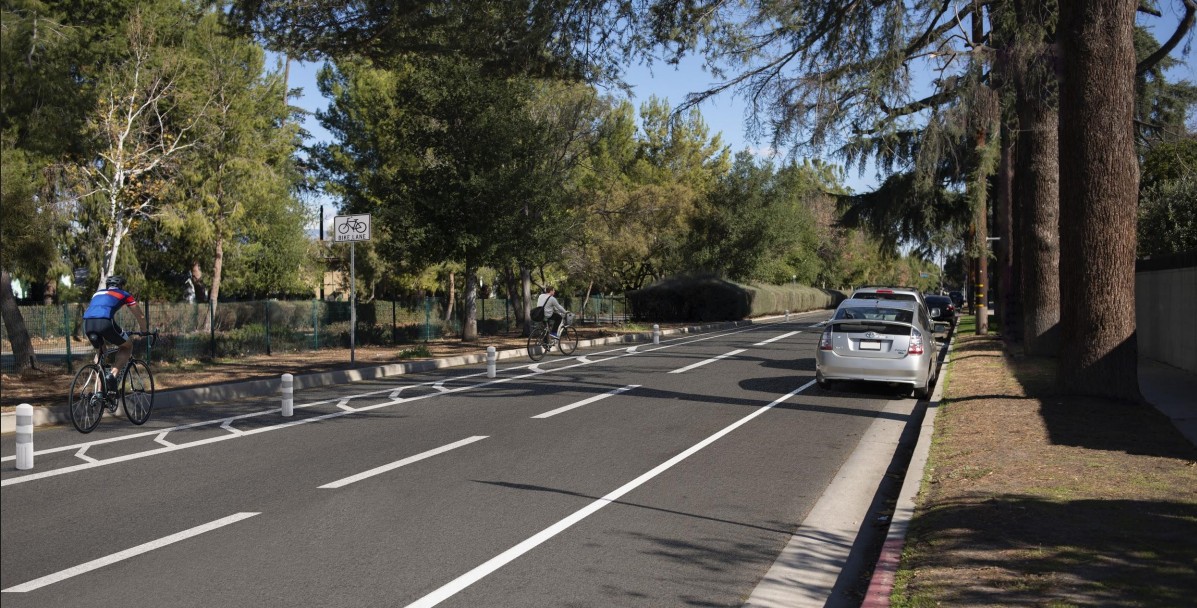The following article first appeared at LongBeachize. It has been lightly edited for clarity.
Long Beach’s largest infrastructure project—connecting the Colorado Lagoon to Marine Stadium—moves forward slowly but surely: the expected 2024 completion date has now been pushed to early 2025.
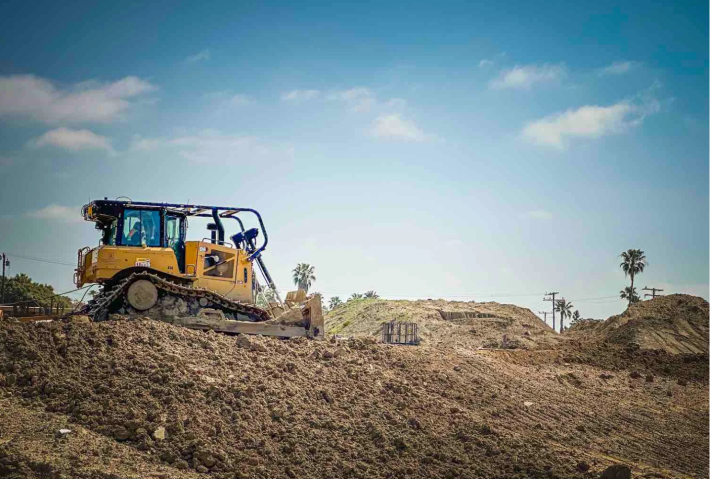
What exactly is happening at Colorado Lagoon and the northern tip of Marina Stadium?
The main point of the project is complicated in terms of construction but relatively simple in concept: returning the Colorado Lagoon back to its former glory by reconnecting it to the Marine Stadium via a new tidal channel that will run through Marina Vista Park.
Excavation of Marina Vista Park for the new channel has begun. The work gives people a very rough preview of what the channel will look like upon completion, stretching from the south side of the Colorado Lagoon to the northern tip of Marina Stadium.
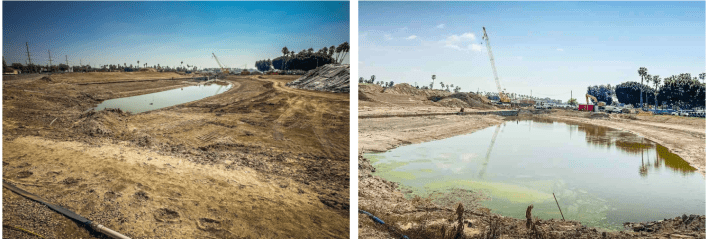
And the slight vibrations felt by neighboring residents? That was the result of sheet piling installation at both the southern part of Colorado Lagoon and the northern tip of Marine Stadium where it meets Elliot Street. The sheet piles are being used to both blockade the water and allow the demolition of existing infrastructure to make way for new bridges: one that will run over the new tidal channel along Colorado Street on the north and another that will run over the channel where it meets Marine Stadium on Elliot Street.
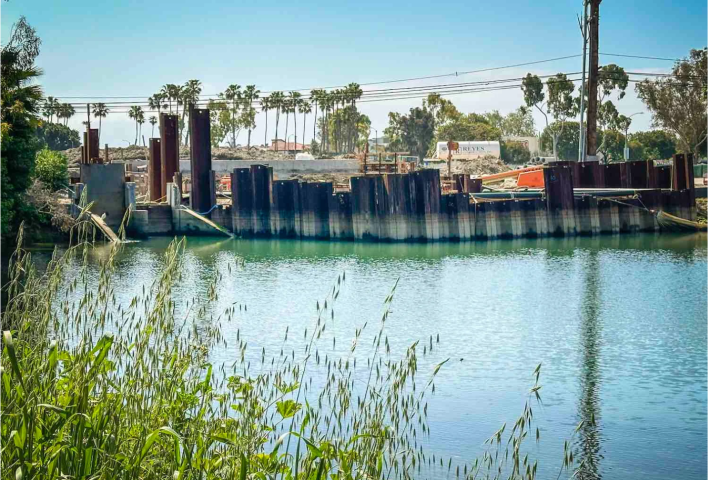
A temporary pedestrian path has been built that allows walkers, bicyclists, runners, and strollers to take a look at the construction as it moves forward. The path is accessible slightly west of Orlena Avenuem on Colorado Street on the east, and at the center of the western curve of Elliot Street on the west.
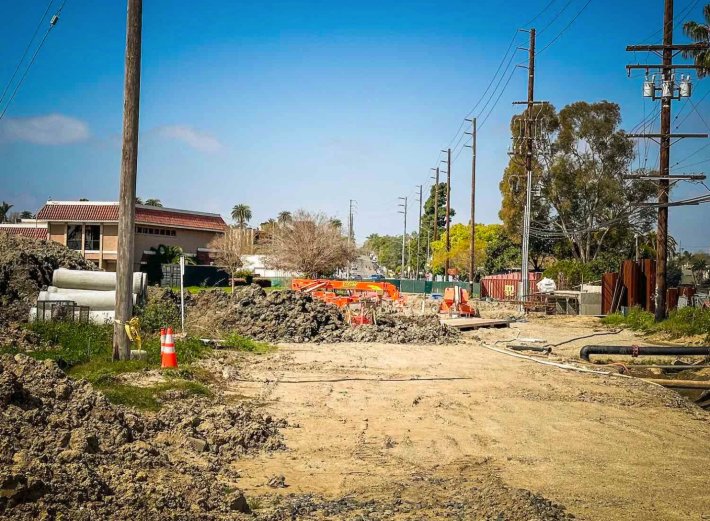
What will the Colorado Lagoon and Marina Park look like upon completion?
When LongBeachize first reported on the project in 2021, the city was out to bid on a contractor. When one was finally chosen in November of 2022, the costs of the project ballooned from $26.3M to $32.5M. When completed, the project will return the water channels into something almost identical to what previously existed before overdevelopment of the space led to an eradication of its environment.
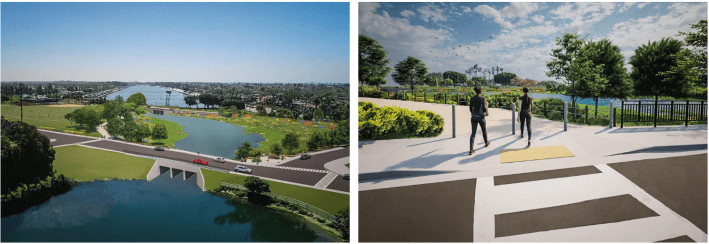
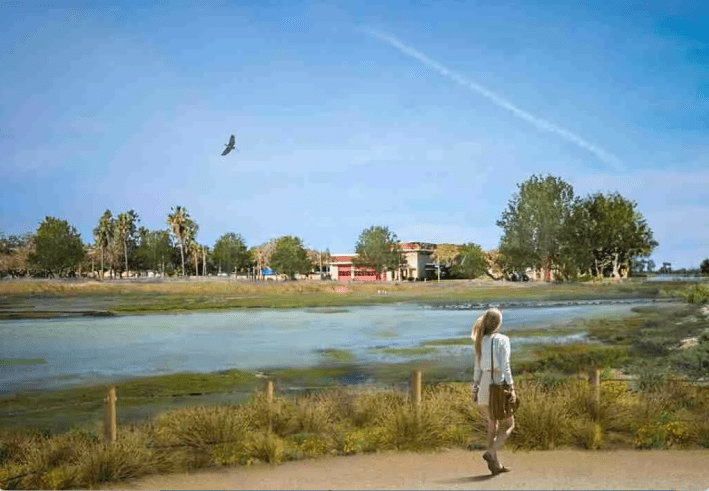
The tidal channel project is the last major phase of what has been a two-decade overhaul of the area. In 2001, the Friends of Colorado Lagoon coalesced to address the massive pollution within the lagoon's waters and decay that had surrounded it from the 1960s onward, when multiple development projects restricted the waters' flow to Marine Stadium.
What’s the history behind Colorado Lagoon and the surrounding area?
Once a beaming jewel of the city, the lagoon was and remains one of the few remaining coastal salt marshes on the West Coast. It has a rich history, which includes being home to the 1928 U.S. Olympic diving trials and serving as one of the most loved picnic spaces by locals.

As part of the 2,400-acre Los Cerritos wetlands, it had enjoyed open connection to the tidal flows in nearby Alamitos Bay. In the 1960s, with an increase in urbanization, an underground culvert was created. But the culvert prevented full tide drainage and, following the many storm drains which dump into the lagoon, led to its pollution.
By the late 1990s, the once-flourishing recreation destination and wildlife habitat was instead dubbed a “Beach Bummer” by Heal the Bay. It would subsequently continue to make lists of the state’s most polluted water bodies, with elevated levels of harmful chemicals and bacteria.
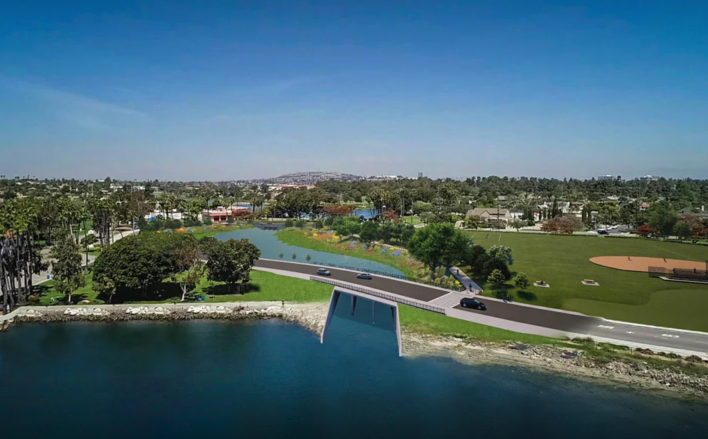
Once advocates were able to connect with the city - following years of back-and-forth about how to go about restoring a lagoon - it took nearly three years to do a full evaluation.
Then it took another five years for the next phase that proved to be the real transformation: a four-year sediment removal project that required not killing or overtly disrupting the existing ecosystem, followed by a year-long process in restoring the shallow water habitat and shoreline that had been altered by the sediment removal process.






